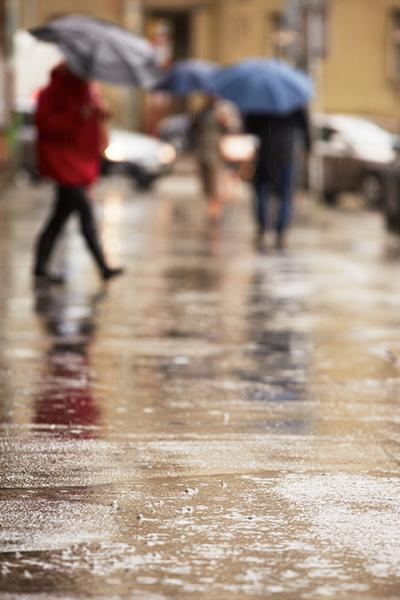
Nirav Shah, MBA, MPH, is a member of the Food Safety Education Staff at the U.S. Department of Agriculture (USDA) Food Safety and Inspection Service.
Being prepared plays a key role in keeping your food safe before severe weather strikes. Knowing how to keep food safe and how to find out if food has gone bad will help you avoid throwing out lots of food. It will also lower your risk of foodborne illness. This is especially true for people with cancer, who are at a higher risk for food poisoning.
Knowing how to keep food safe and how to find out if food has gone bad will help you avoid throwing out lots of food. It will also lower your risk of foodborne illness. This is especially true for people with cancer, who are at a higher risk for food poisoning.
There are things you can do right now while the weather is fine or your local forecast includes a big storm ahead. There are also tips for what to do when that spring storm or other severe weather happens.
8 tips to prepare for a possible weather emergency
-
Keep an appliance thermometer in your refrigerator and freezer. An appliance thermometer will indicate the temperature in the refrigerator and freezer in case of a power outage. This will help you determine whether your food is safe.
-
Set the freezer at 0°F (–18°C) or below and the refrigerator at 40°F (4°C) or below.
-
Freeze containers of water to make ice. Use this ice to help keep food cold in the freezer, refrigerator, or coolers if the power goes out.
-
Freeze refrigerated items, such as leftovers, milk, and fresh meat and poultry, that you may not need immediately. This helps keep them at a safe temperature longer.
-
Find out where dry ice and block ice can be purchased. Fifty pounds of dry ice should keep a full, 18-cubic-foot freezer cold for 2 days.
-
Store food on shelves that will be safely out of the way of contaminated water in case of flooding.
-
Have coolers on hand to keep refrigerator food cold, especially if you think the power will be out for more than 4 hours. Use ice or frozen gel to keep coolers cold.
-
Group food together in the freezer. This helps the food stay cold longer.
8 steps to follow during and after a weather emergency
-
Never taste food to find out if it’s safe.
-
Keep the refrigerator and freezer doors closed as much as possible to keep it cold inside.
-
The refrigerator will safely keep food cold for about 4 hours if it stays closed. A full freezer will hold the temperature for about 48 hours (24 hours if it is half full and the door remains closed).
-
Food may be safely refrozen if it still contains ice crystals or is at 40°F (4°C) or below.
-
If the power has been out for several days, then check the temperature of the freezer with an appliance thermometer or food thermometer. If the food still contains ice crystals or is at 40 °F or below, the food is safe.
-
If a thermometer has not been kept in the freezer, check each individual package of food to determine its safety. If the food still contains ice crystals, the food is safe.
-
After 4 hours without power, throw away refrigerated, perishable food, such as meat, poultry, fish, soft cheeses, milk, eggs, leftovers, and deli items.
-
When in doubt, throw it out!
If you have any questions or would like to order some of USDA’s educational materials, call the USDA Meat & Poultry Hotline at 1-888-MPHOTLINE (1-888-674-6854) or email mphotline.fsis@usda.gov. You can also chat live with a USDA food safety specialist at AskUSDA, available from 10:00 a.m. to 4:00 p.m. Eastern Time, Monday through Friday, in English or Spanish.
Revised September 12, 2018.

